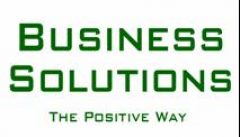Why don’t suggestion programs work?
The typical suggestion program or suggestion box is an open ended and unstructured solicitation of ideas. They will typically end up:
- As a place to put “nice to have ideas” rather than improvement projects
- As a venue to complain
- An expense rather than a savings
- A disappointment for all
- Annoying and disengaging participants
- Wasting a lot of time and money
This happens because:
- Suggestions that are submitted drop into a “black hole” or
- Some suggestions are implemented and others are ignored
- Goals are unclear
- They lack adequate structure
- The participants and not adequately trained
- Expectations are not set and guided
- The criteria are muddy or missing
- There is little or no reward for participation
If you want ideas from your employees, use world-class methods such as Lean, TQM, ISO, Six-Sigma or the Business Solutions: The Positive Way Profit Improvement Process.
One organization with tens of thousands of employees gave up after less than 36 months when they found out that they were not only NOT saving money but they were increasing costs and reducing morale. Painting the ladies bathrooms pink was just one of the suggestions that was rejected because there was no clear ROI. That rejection and others did not go over well at all.
If you are serious about improving your financial situation and sustainability, you need to get serious about having a structured program that engages your team and leadership from the top. We know the ways to do this well and will be happy to review them with you.
